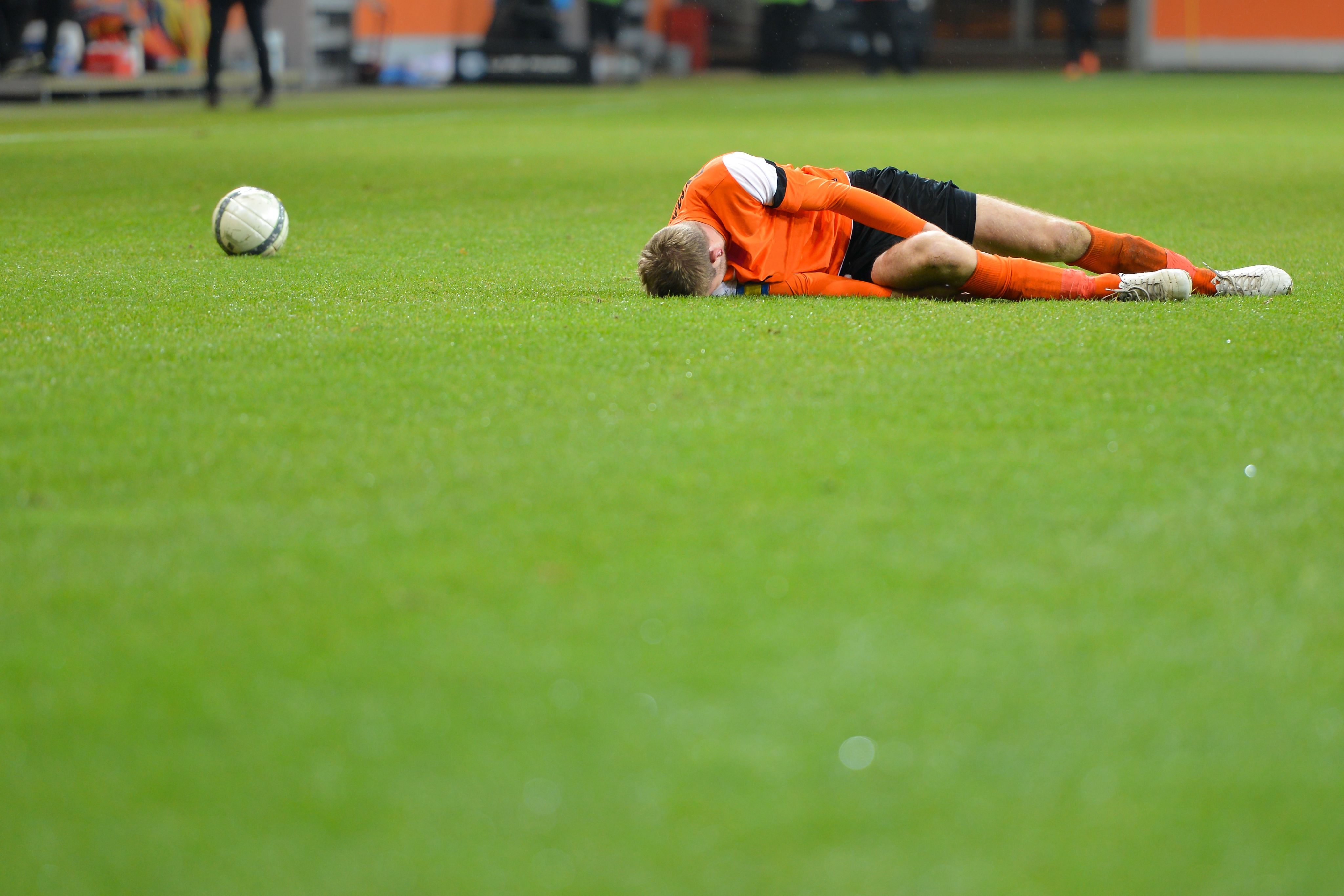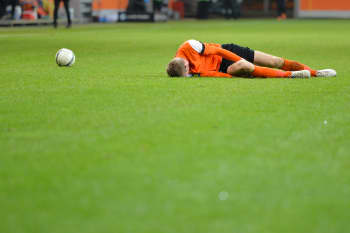OPINION
A history of head knocks:
how a ‘silent’ crisis became sport’s biggest problem

This analysis is written by Dr Stephen Townsend from UQ’s School of Human Movement and Nutrition Sciences.
Sports media is a vibrating colony of cicadas whose chorus peaks with the new football season. The rhythms of this hum are predictable, made up by the usual questions about who’s going to win a premiership, which new players will succeed and fail, and how fans might react to inevitable rule changes.
In recent years, though, one question has resounded above the buzz: what should be done about the problem of concussion in sport?
And more importantly, why hasn’t anything been done yet?
The silent history of concussion
There has been a conspicuous silence about concussion before the turn of the millennium, so much so, that many people view it as a uniquely 21st century problem.
However, people have been playing versions of Western-style contact sports for around 180 years, and our brains have not changed in that time. So, why has there been such a long silence around concussion?
There are a number of possible catalysts for the millennial upsurge in concern about sports concussion, the most popular being the 2002 diagnosis of Chronic Traumatic Encephalopathy (CTE) in the brain of deceased former American footballer Mike Webster. Webster’s tragic death made a compelling story that was fashioned into a Hollywood film and it goes some way towards explaining the birth of the concussion ‘crisis’.
However, as a historian, I never trust a neat origin story - I am trained to listen for the silences. When I began to focus on concussion, I heard whispers of concern that long predate the current commentary.
My research, and that of my Australian and international colleagues, shows that sportspeople and medicos have been concerned about the long-term consequences of concussion for more than a century.
Adobe Stock
Adobe Stock
Adobe Stock
Adobe Stock
Birth of the Concussion Crisis
In the USA during the 1890s, deaths from head trauma in college football created what historian Dr Emily Harrison calls the ‘first concussion crisis’. This crisis took the form of public debate about the continuation of football which prompted the formation of the National Collegiate Athletic Association to protect the game from critics.
Sources from Britain pre-date even this with the Chief Medical Officer at England’s famed Rugby School Dr Robert Farquharson writing for The Lancet in 1870 (p.545), calling for an end to schoolboy football due to the head injuries sustained by the young players. Farquharson bemoaned that he was powerless to stop the “violence and roughness” because, even as early as 1870, “custom and tradition have so hallowed many of their usages”.
Australia too has experienced its own early concussion crises. The 1901 death of boxer Otto Crib following a fight in Sydney provoked a major backlash from the press. Following this, Australia’s most popular sporting publication at the time The Referee Newspaper called for better medical care in boxing, noting that “it is an admitted scientific fact that the outcomes of a concussion of the brain may not become apparent for weeks, months, or even years after the injury…”.
My 2021 study of concussion in early 20th century Australian sporting newspapers showed widespread concerns that repeated head trauma could lead to athletes becoming “slaphappy”, “cuckoo” or “walking on their heels.”
So, well before the death of Mike Webster and even before Dr Harrison Martland first described Dementia Pugilistica in 1928, we can see international evidence of scientifically informed public debate about concussion and CTE, coupled with frustrations at the lack of progress toward player safety.
“Outcomes of a concussion of the brain may not become apparent for weeks, months, or even years after the injury…”
Why has it taken us 150 years to take these concerns seriously?
Like most historical questions, there is no single answer.
In the 21st century, medical advances have enabled us to learn more about the brain and there is an increasing body of evidence supporting a link between brain trauma and dementias like CTE. Sport has also become more heavily scrutinised. One consequence of increased media coverage and more oversight from public health bodies is that it is more difficult for sporting bodies to ignore or suppress concerns about brain health.
Broader social changes have also prompted questions about the value of violent sports and our duty of care toward athletes. We should, however, be wary of arguments that the concussion crisis is a symptom of sport becoming ‘soft’, as has been claimed by some reactionary public figures, such as US President Donald Trump or Australian rugby league icon Phil Gould who recently described “concussion hysteria” as being akin to "arguing with people on climate change."
Certainly, a recent movement toward prioritising player welfare has challenged the myth of athletes as a special breed of gladiators but historical research shows that athletes, the press, and the public have been concerned about brain trauma long before this issue became yet another battleground in the culture wars of the 21st century. Even the most conservative modern sports fan would be hard pressed labelling boxer Gene Tunney, who campaigned in the 1930s for better concussion protections in his sport, as ‘woke’.
The evidence of historical concussion crises in Australia and internationally reminds us that progress is not linear. Previous concerns about concussion and CTE were suppressed so that sport could continue unimpeded and unchanged. Avoiding this in the 21st century will require continued and deliberate efforts from researchers, advocates, policymakers, and most of all, athletes and parents.


Useful links
Other work by Dr Stephen Townsend:
- Head in the Game: Sociocultural Analyses of Brain Trauma in Sport
- Concussion’s Past – a special issue of the Journal of Sport History
- Dr Stephen Townsend on The Conversation
- Dr Stephen Townsend on Headfirst: a Concussion Podcast
Related articles and resources on CTE and concussion
Adobe Stock
Adobe Stock




